Found this '89 JDM Legend and started inquiring today. Looks like the USDM Acura version but it's not. It's called the Honda Legend 2.0 Ti Exclusive "Wing Turbo" version...
I pulled this from Wikipedia:
"In October 1988, Honda upgraded the C20A V6 engine used exclusively in the KA5 series Legend with a variable geometry turbocharger, calling it the "Wing Turbo" in a Japanese TV commercial to address the modest power available from the previous engine with variable length intake manifold used in earlier models. The turbocharger compressor housing had four vanes made from heat resistant Inconel alloy surrounding the turbine wheel (on the inlet side of it) that would fluctuate based on engine load and transmission gearing above 2,000 rpm to allow for increased airflow into the engine as needed. The turbo compressor could generate as much as 450 millimetres of mercury (8.7 psi) of boost, and was paired with a water cooled intercooler installed inside the intake plenum between the cylinder banks to produce 140 kW (190 PS; 188 bhp) net at 6000 rpm and a maximum torque of 24.6 kg⋅m (241 N⋅m; 178 lb⋅ft) at 3,500 rpm.[8][9] The turbo was installed not necessarily to make the engine more powerful, but rather to increase fuel efficiency and reduce emissions, as the Japanese pay a tax on the amount of emissions the car produces.
According to an excerpt of Automotive Engineering in January 1989, "The movable wings are positive pressure- and vacuum-operated, their angle changes are controlled by an eight-bit 36-kilobyte computer that also manages fuel injection. Positive pressure to the wing actuator is supplied by the turbo's supercharge pressure, controlled by a frequency solenoid valve, and negative pressure is generated by intake vacuum and accumulated in a reservoir which is also solenoid controlled. The CPU is fed signals including boost pressure, intake temperature, coolant temperature, throttle opening, engine rpm, and vehicle speed. The Wing Turbo is not fitted with a conventional wastegate.
On idling and steady-state cruising that do not require supercharging, the movable flags—or wings—which are fully opened, allow exhaust gas to enter the enlarged nozzle area and pass through the turbine smoothly with little resistance. At the beginning of full acceleration, the wings close fully, reducing the nozzle area through which accelerated gas enters and strikes the turbine blades forcefully, gaining boost quickly. When maximum boost is obtained, the movable wings begin to close gradually, until the vehicle reaches a desired cruising velocity whereby the wings open fully. The nozzle area varies continuously according to operating and load conditions."
The turbo was installed just above the automatic transmission unit; a manual transmission was not offered. This engine was only offered in Japan using the more compact sedan body style, labeled as "2.0 Ti Exclusive" and "2.0 Ti". The engine was used for just two years, due to the introduction of the second generation Legend in 1990 with the much larger C32A V6, and as such Wing Turbo sedans are extremely rare. Much of the research on this engine contributed to the VTEC C30A V6 engine used in the 1990 Honda NSX. The Legend Turbo can be identified as by a "TURBO" badge attached to the front grille on the bottom right hand side and a "V6Ti" rear badge."
The pic quality sucks but they haven't sent me any high resolution images yet.
Naturally I have a lot of questions:
1. Does the car come with any documentation if so how extensive is it?
> Window sticker, original bill of sale, service records, etc. ?
2. How sound is it mechanically?
> Anyway to know if the timing belt has been replaced?
> Is the A/C in good working order and has been converted to 134a or does it still use R-12?
> Are all the basics intact? i.e. owner's manual, spare tire, jack, etc.?
2. I understand being a RHD drive model the headlights are aimed accordingly and skew to the left. Can they be aimed to meet US standards?
3. Is it true the radio will not receive stations in the US due to different frequency bands?
4. Is the "TFT Crystaltron" screen mounted to the console some sort of Navi device and is the rear antenna mounted the fender part of this?
5. What are the "winglet" devices mounted to the sides of the rear window?
6. What is the black plate mounted next to the transmission shift indicators on the console?
7. What is the device mounted to the right underside of the hood?
So has anyone here ever heard of a Honda Legend 2.0 Ti Exclusive? Since it's JDM and sort of rare it's not on everyone's radar but I really like the extra chrome trim and grill looks very sophisticated.
Curious to see how much smaller it is since it was designed "... to comply with Japanese vehicle size requirements and reduced tax liability, the car with the 2.0 L V6 was slightly shorter and narrower for Japanese buyers by reducing the extension of the front and rear bumper covers, and reducing the overall width to 1,695 mm (66.7 in)." So it may not work for me but I haven't been this excited since I bought the TSX...
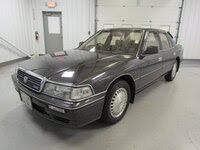
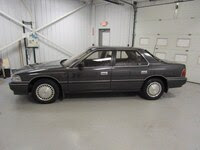

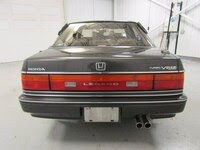
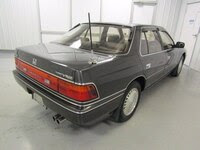
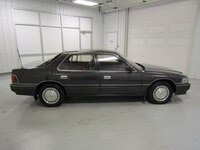
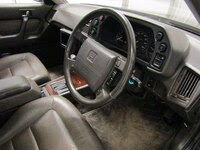
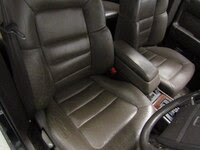
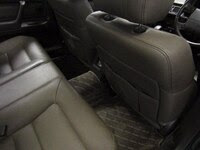
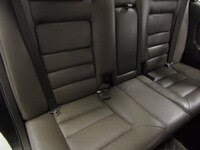
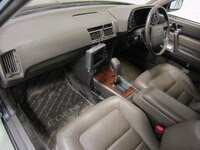
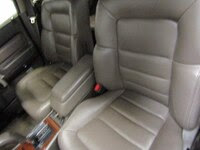
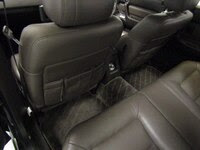


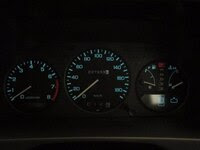

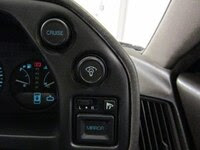
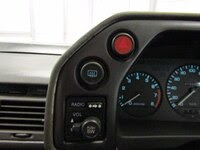
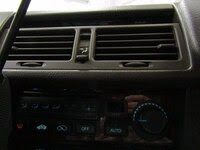
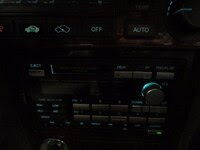
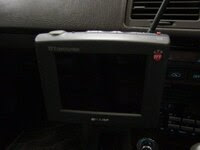
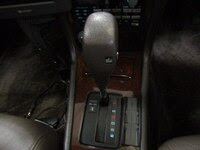
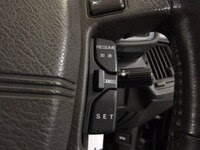

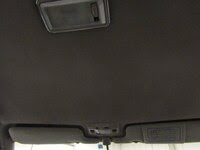
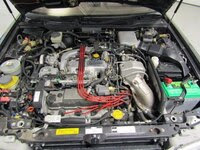
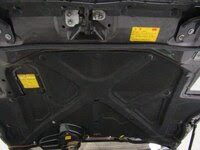
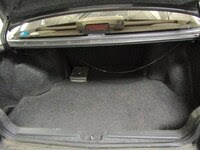
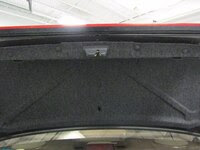



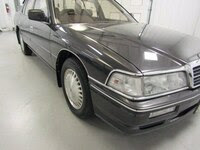
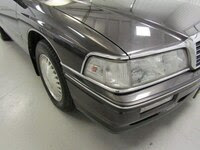
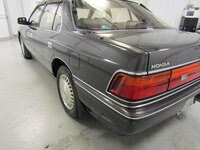
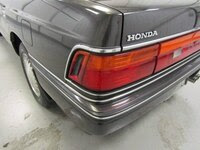
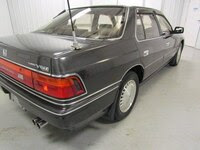

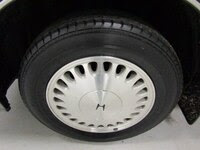
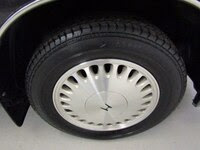
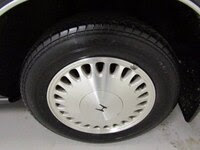

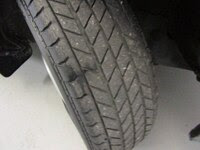
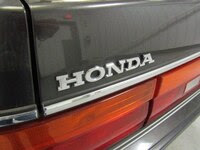
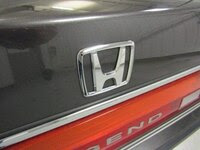

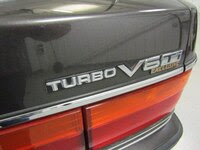
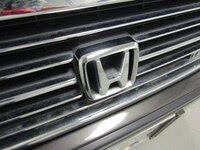
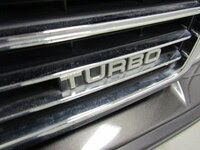
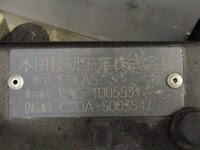
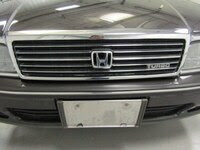
I pulled this from Wikipedia:
"In October 1988, Honda upgraded the C20A V6 engine used exclusively in the KA5 series Legend with a variable geometry turbocharger, calling it the "Wing Turbo" in a Japanese TV commercial to address the modest power available from the previous engine with variable length intake manifold used in earlier models. The turbocharger compressor housing had four vanes made from heat resistant Inconel alloy surrounding the turbine wheel (on the inlet side of it) that would fluctuate based on engine load and transmission gearing above 2,000 rpm to allow for increased airflow into the engine as needed. The turbo compressor could generate as much as 450 millimetres of mercury (8.7 psi) of boost, and was paired with a water cooled intercooler installed inside the intake plenum between the cylinder banks to produce 140 kW (190 PS; 188 bhp) net at 6000 rpm and a maximum torque of 24.6 kg⋅m (241 N⋅m; 178 lb⋅ft) at 3,500 rpm.[8][9] The turbo was installed not necessarily to make the engine more powerful, but rather to increase fuel efficiency and reduce emissions, as the Japanese pay a tax on the amount of emissions the car produces.
According to an excerpt of Automotive Engineering in January 1989, "The movable wings are positive pressure- and vacuum-operated, their angle changes are controlled by an eight-bit 36-kilobyte computer that also manages fuel injection. Positive pressure to the wing actuator is supplied by the turbo's supercharge pressure, controlled by a frequency solenoid valve, and negative pressure is generated by intake vacuum and accumulated in a reservoir which is also solenoid controlled. The CPU is fed signals including boost pressure, intake temperature, coolant temperature, throttle opening, engine rpm, and vehicle speed. The Wing Turbo is not fitted with a conventional wastegate.
On idling and steady-state cruising that do not require supercharging, the movable flags—or wings—which are fully opened, allow exhaust gas to enter the enlarged nozzle area and pass through the turbine smoothly with little resistance. At the beginning of full acceleration, the wings close fully, reducing the nozzle area through which accelerated gas enters and strikes the turbine blades forcefully, gaining boost quickly. When maximum boost is obtained, the movable wings begin to close gradually, until the vehicle reaches a desired cruising velocity whereby the wings open fully. The nozzle area varies continuously according to operating and load conditions."
The turbo was installed just above the automatic transmission unit; a manual transmission was not offered. This engine was only offered in Japan using the more compact sedan body style, labeled as "2.0 Ti Exclusive" and "2.0 Ti". The engine was used for just two years, due to the introduction of the second generation Legend in 1990 with the much larger C32A V6, and as such Wing Turbo sedans are extremely rare. Much of the research on this engine contributed to the VTEC C30A V6 engine used in the 1990 Honda NSX. The Legend Turbo can be identified as by a "TURBO" badge attached to the front grille on the bottom right hand side and a "V6Ti" rear badge."
The pic quality sucks but they haven't sent me any high resolution images yet.
Naturally I have a lot of questions:
1. Does the car come with any documentation if so how extensive is it?
> Window sticker, original bill of sale, service records, etc. ?
2. How sound is it mechanically?
> Anyway to know if the timing belt has been replaced?
> Is the A/C in good working order and has been converted to 134a or does it still use R-12?
> Are all the basics intact? i.e. owner's manual, spare tire, jack, etc.?
2. I understand being a RHD drive model the headlights are aimed accordingly and skew to the left. Can they be aimed to meet US standards?
3. Is it true the radio will not receive stations in the US due to different frequency bands?
4. Is the "TFT Crystaltron" screen mounted to the console some sort of Navi device and is the rear antenna mounted the fender part of this?
5. What are the "winglet" devices mounted to the sides of the rear window?
6. What is the black plate mounted next to the transmission shift indicators on the console?
7. What is the device mounted to the right underside of the hood?
So has anyone here ever heard of a Honda Legend 2.0 Ti Exclusive? Since it's JDM and sort of rare it's not on everyone's radar but I really like the extra chrome trim and grill looks very sophisticated.
Curious to see how much smaller it is since it was designed "... to comply with Japanese vehicle size requirements and reduced tax liability, the car with the 2.0 L V6 was slightly shorter and narrower for Japanese buyers by reducing the extension of the front and rear bumper covers, and reducing the overall width to 1,695 mm (66.7 in)." So it may not work for me but I haven't been this excited since I bought the TSX...





















































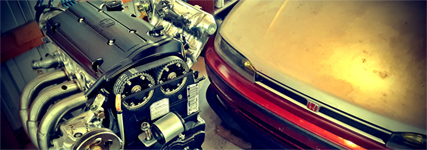
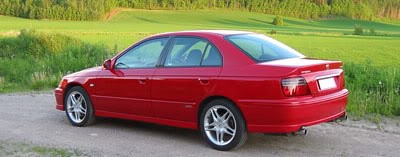
Comment